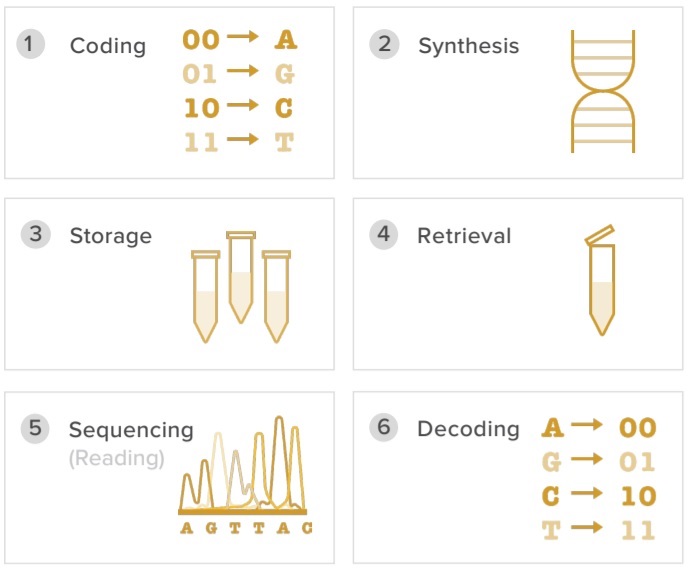The Science
Between the Lines utilises DNA data storage technology to store stories and experiences from the international student community within synthetic DNA.
What is DNA Data Storage?
DNA data storage is an emerging technology that allows digital information to be encoded into laboratory created DNA. Much like data can be stored on memory sticks or the cloud, DNA can also be used to store digital information.
DNA has many benefits as a storage medium. In the right conditions, data can be preserved for hundreds of thousands of years. It is also extremely compact (all of the world's data could be stored in an area the size of a shoe box) and uses very little energy. Unlike other storage mediums that quickly become obsolete in our rapidly evolving technological landscape, we will always have the technology to decode DNA.

How is digital information encoded?
Computers process and store digital information using binary code, a language consisting of only 0’s and 1’s.
Information stored in DNA works in a similar way. DNA is made up of four chemical building blocks, or ‘DNA nucleotides’. These are: adenine (A), guanine (G), cytosine (C) and thymine (T). The sequence of these blocks determine the biological instructions that they carry.
To store digital information within synthetic DNA, we can convert the binary data of the digital file into DNA nucleotides. This video demonstrates the encoding process using Yaniv Erlich and Dina Zielinski's open-source GitHub repo 'DNA Fountain'.
Recovering the Data
Data is recovered from digital information stored within DNA using a process called DNA sequencing.
DNA sequencing is the process of determining the order of nucleotides within a DNA molecule.
For this project, the sequencing process was performed by Exeter Sequencing Service at The University of Exeter using the Illumina NovaSeq 6000 sequencing machine.